Table of contents
The sales of jewellery are increasing as consumers are expecting some glimmers and luxuries. This phenomenon is combined with another growing demand for personalised style and individualisation. The global jewellery market is $335,71 billion in 2023 and, with an increase of 11,97%, it is expected to touch $418,9 billion by 2026.
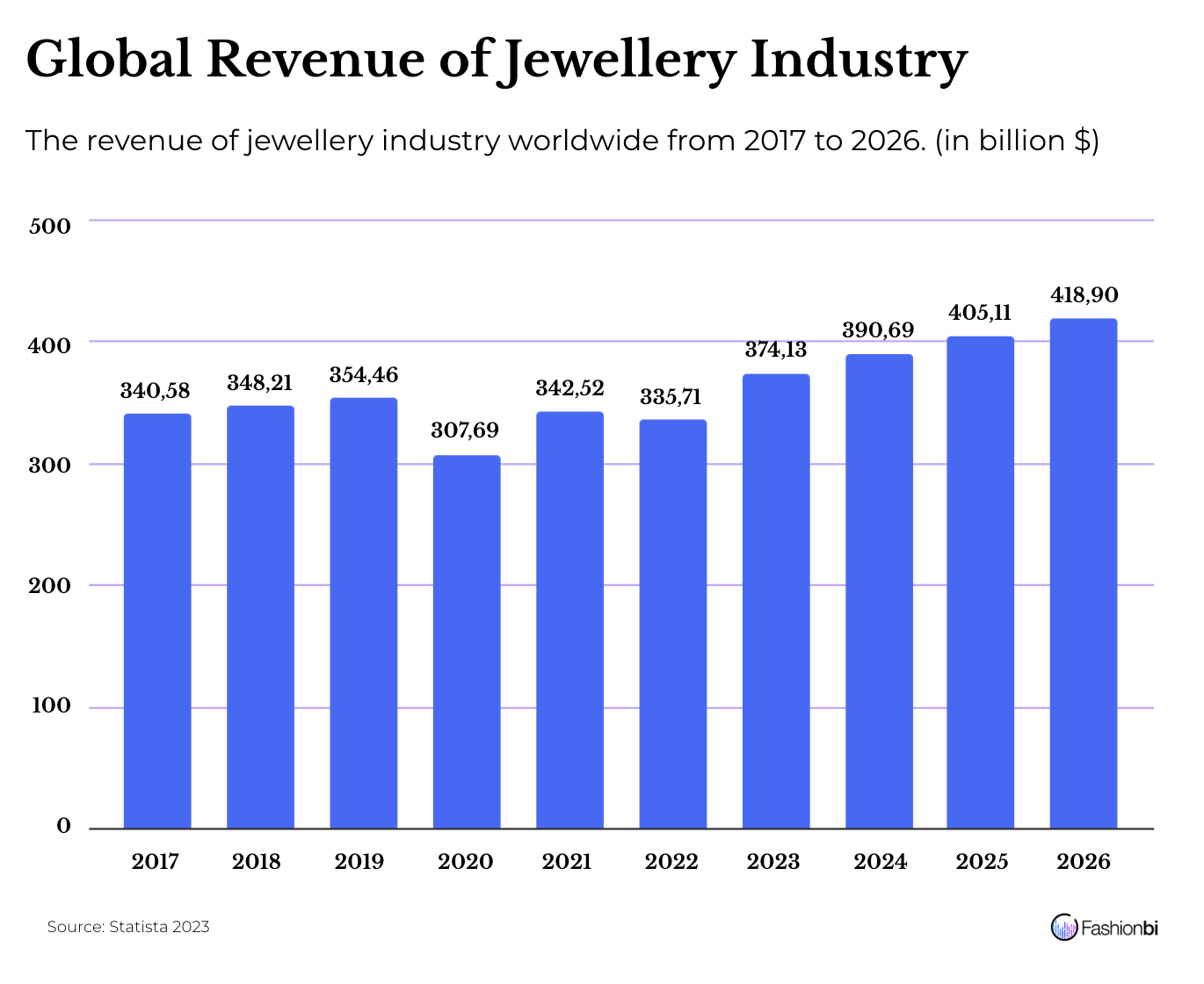
Fine jewellery is getting more attention as Gen Z is interested in it as an investment opportunity. The lab-grown diamond market was $22,45 billion in 2022 and is estimated to reach $37,32 by 2028.
Boosting AR Commerce
Over 90% of US Gen Z and Millennials are showing interest in AR shopping. Infusing augmented reality technology online will improve dwell time and support personalization. The brand has to offer a digital product discovery, highlighting the brand’s heritage. It should give the jewellery shopping experience at home. Consumers with a cost-of-living crisis will appreciate a virtual try-on service for jewellery that limits environmental and financial impacts over returns.
Around 70% of US consumers research before buying jewellery in-store. The shoppers have the necessary tools and resources to know in-depth information on the jewellery. The digital generation prefers to buy high-valued products online.
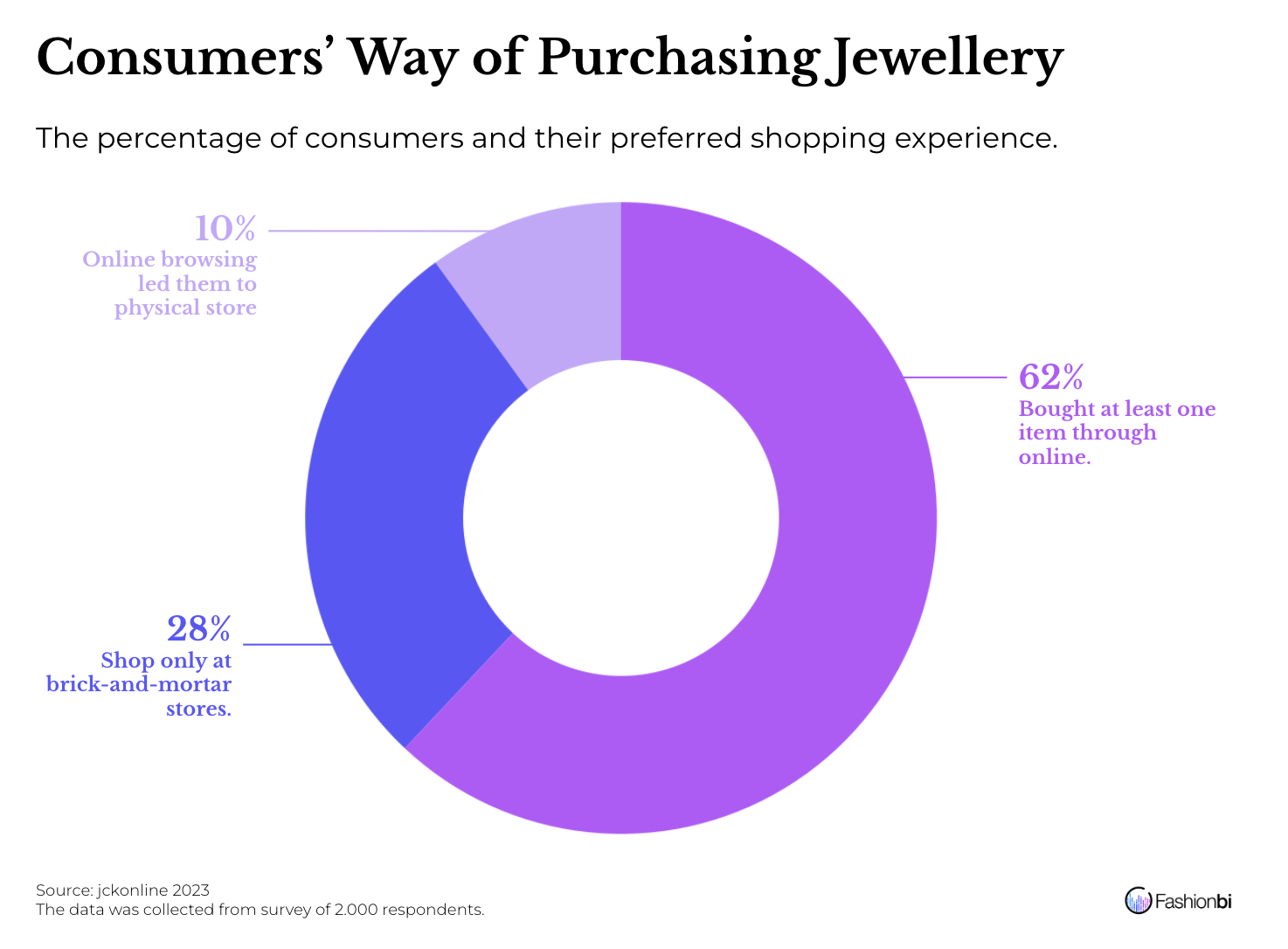
Tiffany & Co. used ray tracing technology that captures the light’s movement on AR objects to give its sparkling gems a more realistic look. US’ Maria Tash launched Tash Studio, a digital try-on software to support customers on piercing and play with ear schemes. Snapchat collaborated with Cartier to launch its first-ever virtual try-on lens.
Tanishq, an Indian retailer, dropped a pop-up experience accompanied by AR mirroring to try on and share the jewellery on social media. In April 2022, after implementing virtual try-ons for luxury watches, Farfetch saw a 47% hike in site visits, a 22% increase in add-to-bags, and an 81% jump in add-to-wish lists. Pandora implemented Virtual VR try-ons on its website, whereas Bulgari recommends virtual try-ons for its accessories such as scarves and stoles.
Sustainability on Jewellery
Sustainability is still a hot topic in 2023. It is leading the jewellery industry to use a transparent mode of practices to make it appealing to consumers. Be it maisons with historical legacies or avant-garde brands, the increasing concerns over the transparency and ethical rules on the products, raw material sourcing, and supply chain of the jewellery industry are forcing the retailers to come up with new strategies.
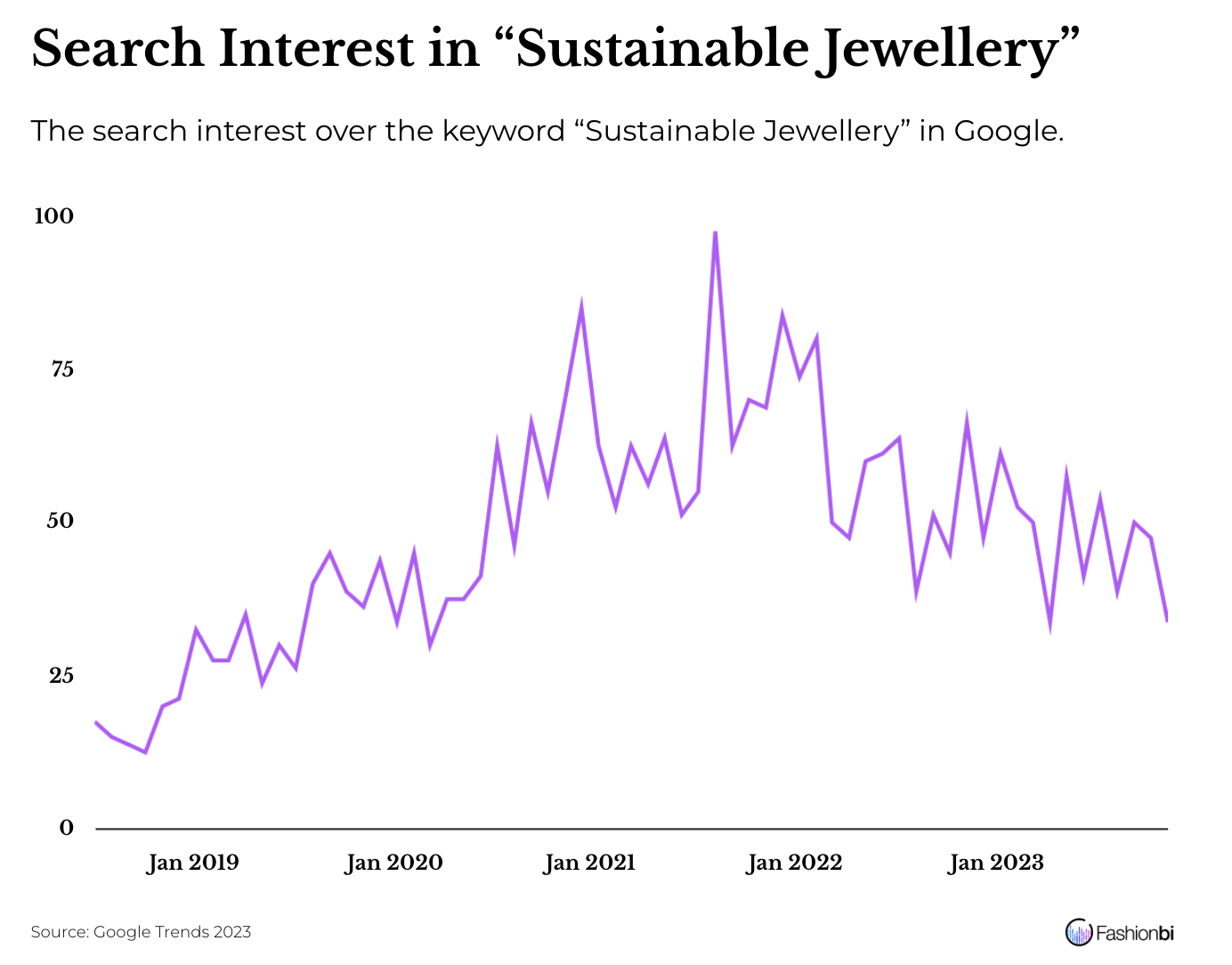
Coming up with a certification system and establishing transparency is the key factor in this strategy. Around 94% of global shoppers prefer the jewellery brands to be transparent and 77,5% are ready to pay more for products that can be traced.
The sustainability-driven purchases will lead to 20-30% of the sales in the fine jewellery market by 2025, which is equivalent to $110 billion. The lab-produced diamonds are in demand now, as the Millennials and Gen Z are investing in a sustainable option for their marriage and engagement jewellery. 70% of the Millennials in the US prefer lab-created diamonds for their engagement rings.
In October 2022, LVMH Moët Hennessy - Louis Vuitton looped in LUSIX, an accredited producer of sustainable diamonds, to utilise solar energy to produce lab-grown diamonds. Pandora launched three lab-produced diamond collections at a starting price of $240 in August 2023. Canada’s Ring Come True is replacing diamonds with a naturally occurring mineral, moissanite, to create a customised engagement ring collection. Prada is using digital ID technology through authentication cards to offer customers a full history of the product’s origin for its first fine jewellery collection.
Gender Fluidity
Gen Z is becoming more sensitive to gender norms. More than two in five Gen Z individuals in the US are identifying themselves as neutral gender. This, for some, became a necessity to be expressed boldly. And, jewellery is an important part of anyone to express their self-identity.
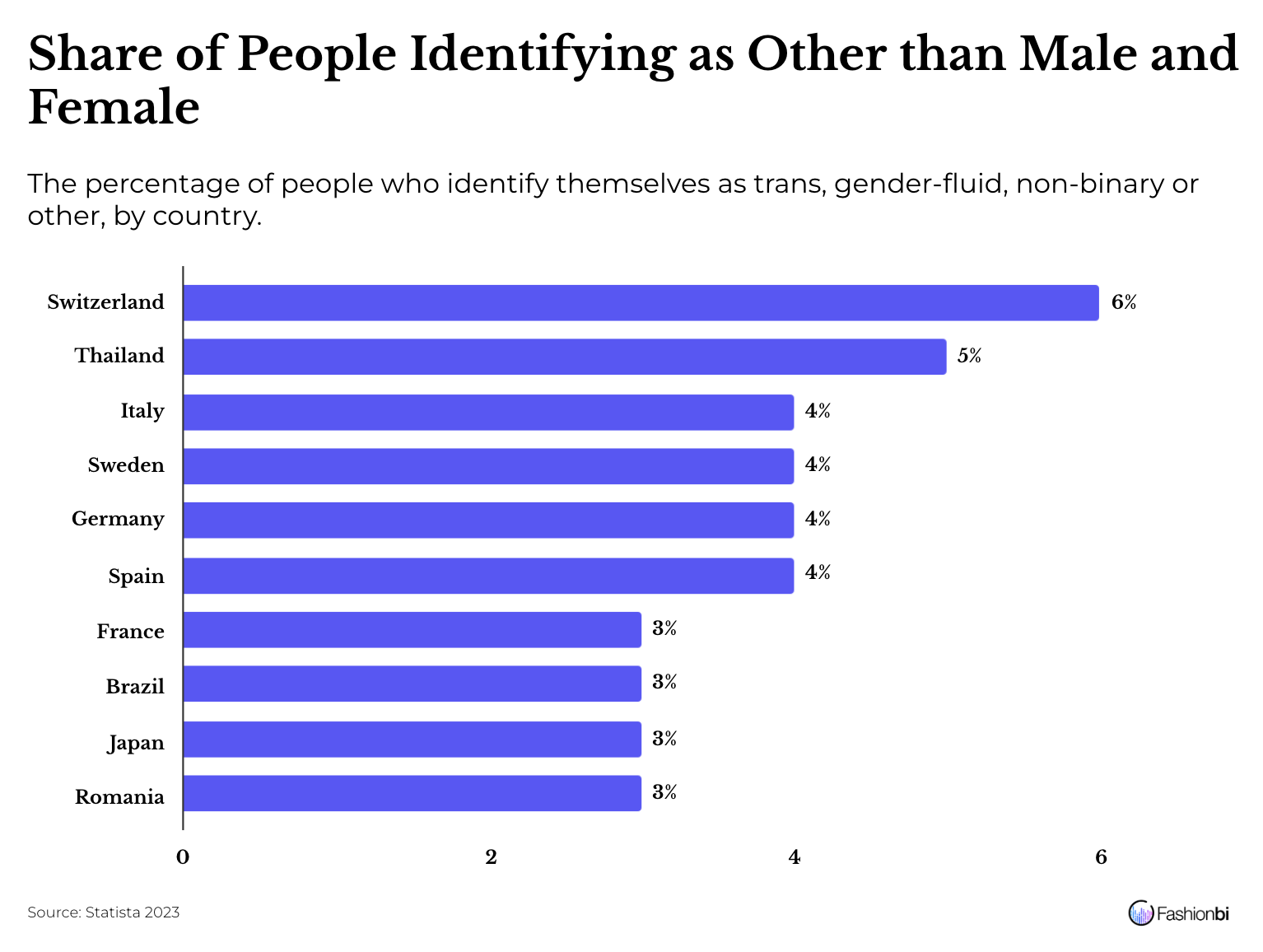
The brands have an opportunity to show that they support and welcome consumers of all gender identities. They launch genderless collections and stop segregating their collections with gender categories. Focusing on playful and funny gestures through the established items is important.
A Japanese label Mikimoto has dropped a gender-fluid line named Passionoir. The Swiss watchmakers, who are generally seen targeting men, are using female ambassadors such as Dilraba Dilmurat for Officine Panerai, and Chiara Ferragni for Hublot. Zenith has removed the category “watches for women” from its site. Tiffany & Co. launched its “Stand for Love” campaign in the pride month of 2021, featuring the people of New York who belong to LGBTQ+ Community.
Expansion in Real World
With the new extending markets and ranges in jewellery categories and the return of in-person shopping, the jewellery brands are handed over various opportunities to widen their markets in the future. In addition to expanding their store presence, they have to implement a premium-yet-affordable (demi-fine) assortment in fine jewellery. It is also crucial to establish an emotional connection with the consumers through engagement in the community to build customer loyalty.
According to Radiant’s survey, 34,9% of respondents enjoy their real-world shopping experience and 24,1% of them would like to have a glimpse and touch the products before buying.
The demi-fine jewellery market had sales of $399 million in 2021 and is forecasted to have a CAGR of 15% between 2022 and 2030. It is estimated to overtake fine jewellery. The jewellery retailers are expanding their store presence in Tier 2 and 3 cities. The luxury brands are opening standalone stores in Texas and Florida, whereas countries such as India, Korea, and Thailand are the key APAC region markets.
Claire's is expanding across Europe by opening 50 stores by 2023. Mejuri is focusing on Tier 2 and 3 cities, and unveiling five stores in various locations by the same year. The department store Le Bon Marché has renovated their space which will now house around 17 brands, including Spain-based Simuero and French maisons like Gas Bijoux. In India, Sangeeta Boochra and NIMAI launched their first-ever collaborative flagship store in Mumbai.
Pre-owned Market
The pre-loved jewellery market worldwide is valued to be at € 43 billion in 2022 with watches at €27 billion and jewellery at €11 billion. It is witnessing sharp growth and is forecasted to touch €25,4 billion by 2025 with a CAGR of 8%. According to Google Trends, the search for “jewellery resale” has grown by 97% year-on-year in the month of August 2023.
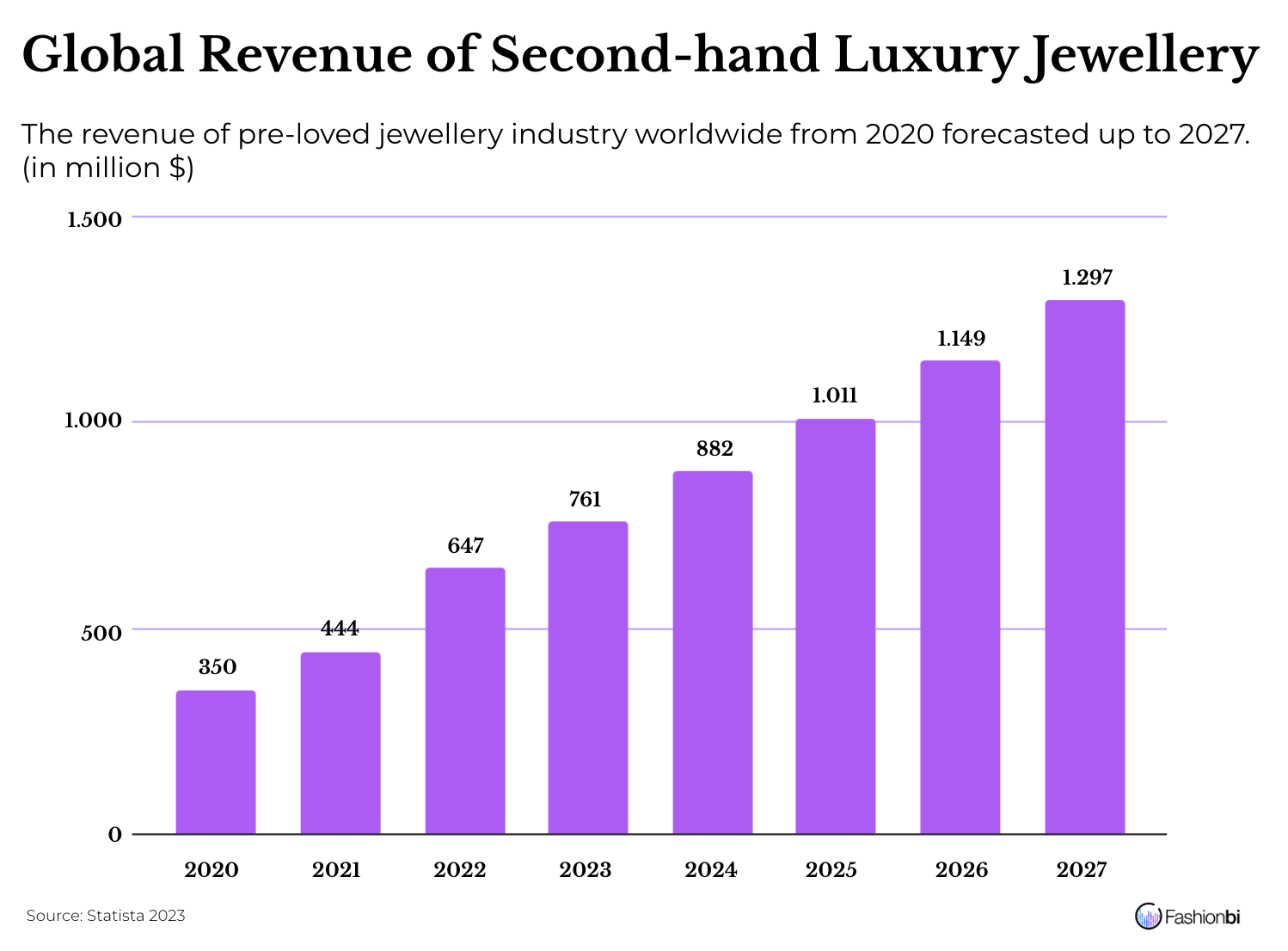
The luxury jewellery rental market is expected to grow at a CAGR of 12,86% from 2020 to 2025 in France. Following that, the UK, Netherlands, and Spain had a CAGR of over 11% in the same period. The lowest growth is expected in Sweden with 3,32%.
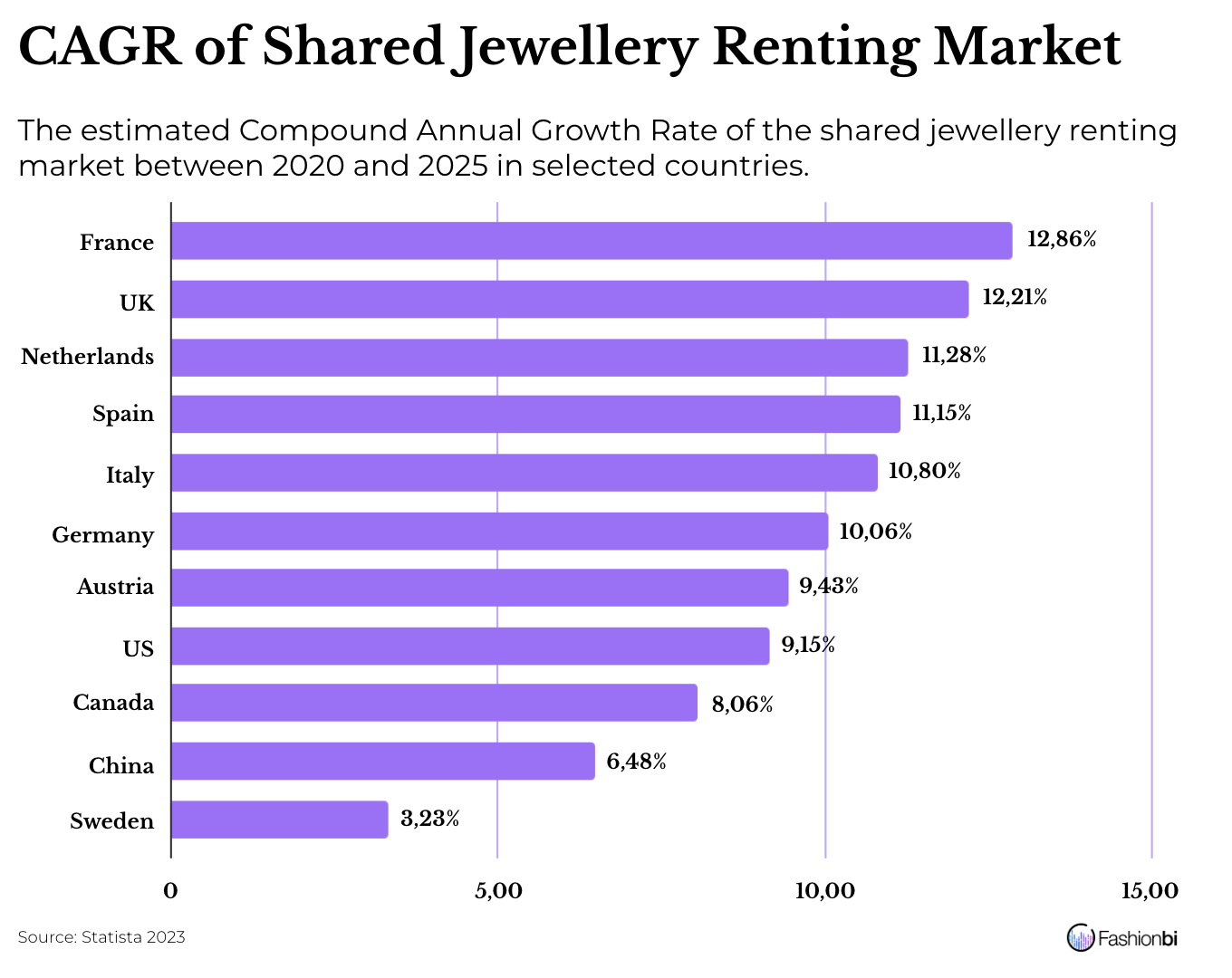
With the growing support for sustainability and like for brands’ archival items, many shoppers are preferring pre-owned goods which allows them to get high-class products at an affordable price. The retailers can use the narrative of the restoration and preservation of craftsmanship with a highlight on the brand’s history and culture.
Goodwill has GoodwillFinds, an online second-hand items market that features luxury jewellery items such as Burberry’s sapphire Swiss watch. US’s Zales collaborated with a rental system Rocksbox to introduce a jewellery rental programme. The pre-owned luxury jewellery platforms include Luxepolis, Worthy, RE/WAY, Ziniosa, Kings Hill Jewellery, The Luxury Closet, ReTag, Jomashop, Collector Square, Farfetch and Vestiaire Collective.
Cover Image: Pandora's three lab-produced diamond collections, Tiffany & Co.'s virtual try-on and Mikimoto's Passionoir collection, courtesy Oui Speak Fashion, MIT Technology Review and Men's Folio respectively.